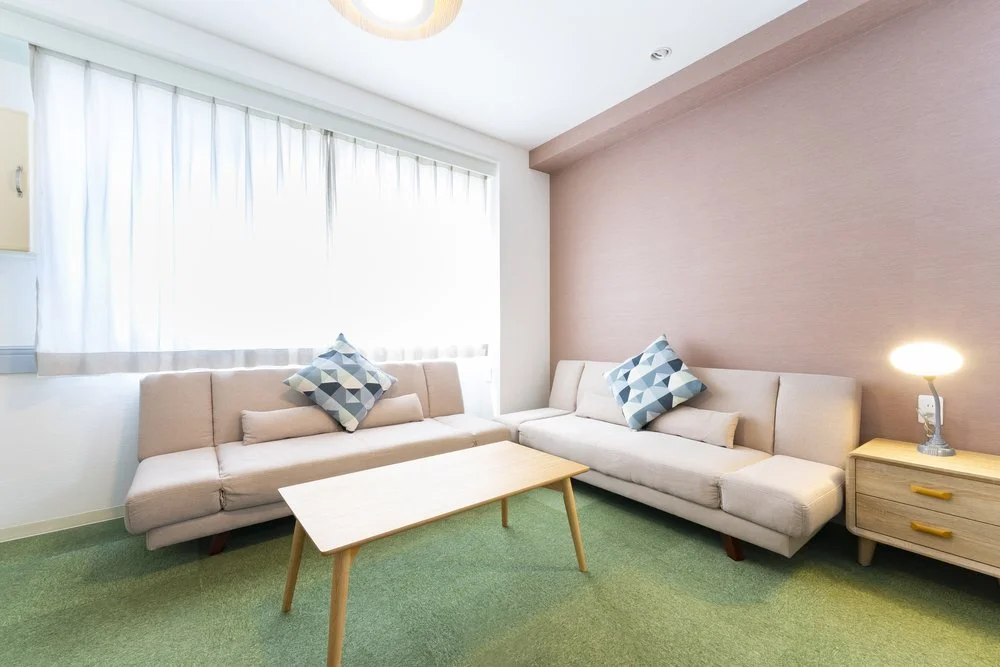Understanding Apartment Income Restrictions
/Back during the tumultuous times of the Great Depression, countless Americans faced severe financial hardship, leading to a widespread housing crisis. Recognizing the desperate need for affordable housing solutions, the federal government intervened. This intervention gave birth to the Housing and Urban Development (HUD) agency.
The Affordable Housing Act of 1937 was a pivotal response to this crisis, aiming to foster the development of new, affordable rental housing. This act made provisions to subsidize the operational costs related to apartment income restrictions. Following this, Section 8 housing emerged under the Section 8 Housing Act of 1937. It remains a critical housing choice voucher program to this day.
In more recent history, there's been a shift to Section 42 housing, introduced under the Tax Reform Act of 1986. This change offers tax credits as incentives for investors, encouraging them to build affordable housing for those in need.
What Are Apartment Income Restrictions?
What does "income-restricted apartment" mean? Income-restricted apartments cater to renters whose income falls within specific predefined ranges. These rental properties might be owned by city governments or by private owners who benefit from government subsidies.
In many places, communities are dedicated entirely to income-restricted apartments. However, it's not uncommon to encounter mixed communities that house both market-rate and income-restricted apartments side by side. This blend ensures diverse and inclusive living environments while still providing affordable housing solutions.
What’s the Difference Between Income-Restricted Housing and Income-Based Housing?
The terms "income-restricted" and "income-based" might sound alike, but they define distinct housing types. While both get subsidies from the government, the manner in which a resident's portion of the rent is determined varies.
Income-Restricted Housing
Income-restricted housing is a type of affordable housing where the primary factor determining rent is the area's median income. But what does median income mean? Imagine lining up everyone in a community from the lowest to the highest income. The person in the middle — not the richest, not the poorest — represents the median income.
For rentals with apartment income restrictions, officials set a maximum rent based on a percentage of the median income. The exact percentage can change depending on which state you're in and even the size of the apartment. So, while two people might live in income-restricted apartments in different states, the amount they pay could be different because of how each state calculates it.
Income-Based Housing
On the other hand, with income-based housing, it's all about the individual resident. Instead of looking at the broader community's earnings, officials focus on the renter's adjusted gross income to set the rent. This figure represents the resident's total income before taxes, minus certain deductions. It's a more personalized approach.
In this system, renters shouldn't spend more than 30% of their adjusted gross income on rent. This standard ensures that residents can handle housing costs, regardless of the surrounding area. So, even if someone lives in an expensive neighborhood, if they qualify for income-based housing, the rent will always be based on what they earn.
Who Can Benefit From Income-Restricted Apartments?
Specific guidelines are in place for income-restricted apartments, meaning there are rules set up to help people find affordable housing. Here's how it works: The Department of Housing and Urban Development, or HUD, sets income limits that determine who can live in these more affordable homes. These levels change from one city to another because some places are more expensive than others.
Every year, HUD looks at the average earnings of people in different cities and then sets three categories: “Low,” “Very Low,” or “Extremely Low.” People in the “Very Low” group often get the first chance at affordable homes. Those in the “Extremely Low” group get a special preference since they earn the least.
Even if you're in the “Low” group, there might still be places available for you. Apartment income restrictions are a way to make sure those who really need help with housing costs get a fair opportunity.
How Can You Find Apartments With Income Restrictions?
Income-restricted apartment costs shift based on locale and apartment size, with different methods utilized to determine maximum rent caps. To get a clear picture of costs in your region, it’s best to contact your local housing authority.
When locating income-restricted housing, your first step should be understanding the income guidelines specific to your area, available on the HUD website. Your next stop would be your local Public Housing Authority (PHA). If you find you're eligible, you can proceed with the application. The application process will typically require thorough documentation, background checks, and, often, a waiting period.
What Are the Pros of Income-Restricted Housing?
When it comes to income-restricted housing, there are several significant advantages that make it an attractive option for many.
Affordability
One of the main advantages is affordability. In many cities where living costs are high, these homes are a chance for people to live reasonably. This means even if you don't make a lot of money, you can still have a decent place to stay.
Quality
Another plus is that these houses or apartments are often of good quality. Many of them, especially the newer ones, have amenities, such as laundry facilities, fitness centers, pools, and playgrounds. People aren't just saving money; they're also living in a comfortable home.
Diversity
A less obvious benefit is that these housing projects bring people together. When people from various income levels live close to each other, it creates a mix of experiences and cultures. This diversity enhances the community.
What Are the Cons of Income-Restricted Housing?
There are some challenges to apartment income restrictions.
Limited Availability
High demand is a persistent challenge. In rapidly growing urban areas, the demand for affordable housing has skyrocketed. As a result, potential renters might find themselves on waiting lists that can stretch for months or even years. Moreover, the limited number of units can't always accommodate the burgeoning demand, leading to frustrations.
Income Ceilings
Another potential problem is the income limit. If someone starts earning more money, they might not qualify to continue living at the property. Residents could find themselves earning too much to qualify for their current place but too little to comfortably afford market-rate housing in their neighborhood.
Background Checks
Finally, there are detailed background checks which might feel too personal for some. Also, not all places have the same rules. Some privately owned properties might be stricter than those owned by the government. While one landlord might overlook a minor offense from years ago, another might have a zero-tolerance policy, leading to inconsistencies in the application process.
Don’t Let Apartment Income Restrictions Hold You Back
Navigating the world of affordable housing is no small task, with its apartment income restrictions, waiting lists, and qualifications. But the rewards – from financial relief to the joy of having a home you're proud of – can make the effort worthwhile.
If you need housing assistance, check out our top five resources to secure affordable housing.



